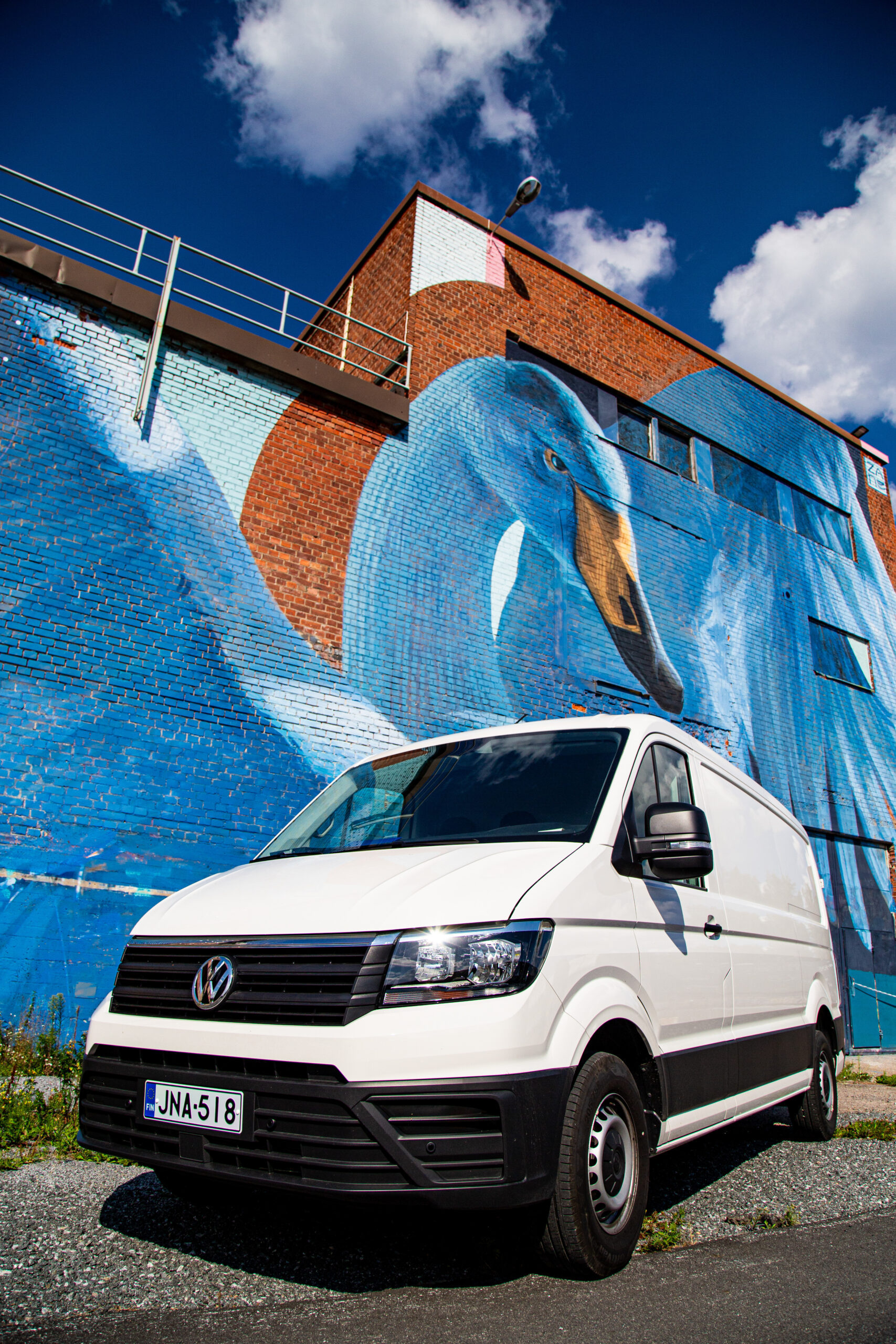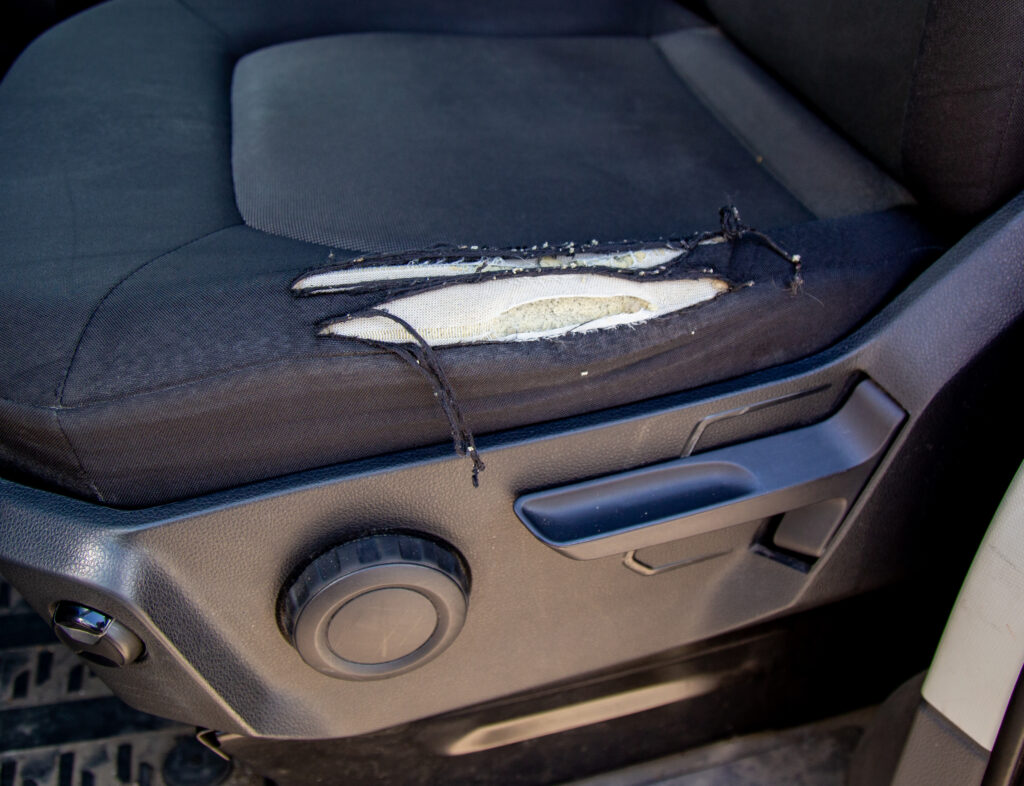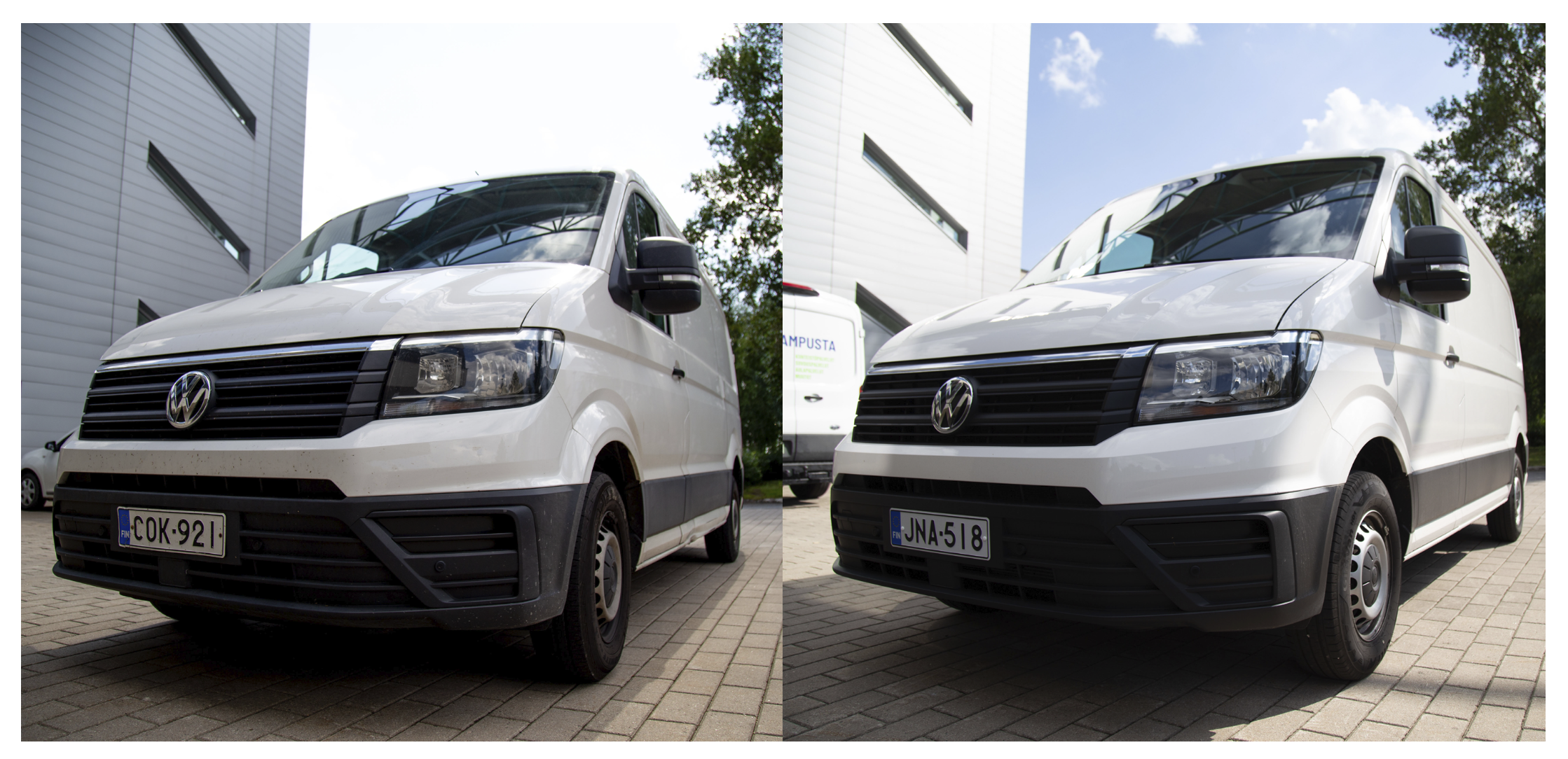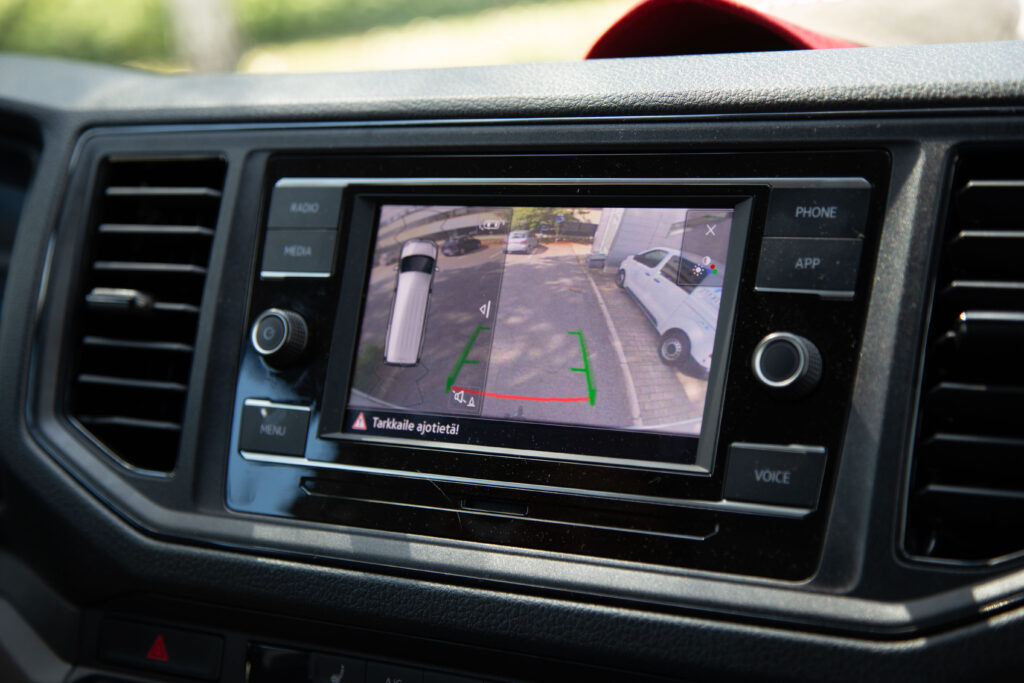Hundred-thousand-euro bumper cars – We test-drove Trey’s vans
TREY is making a grand investment: the old vans are being replaced by brand-new ones. The vans on the Hervanta and City centre campuses are there mainly for students, so Visiiri adventured out to check out whether students get good value for their money.
Original text: Juuso Pikkarainen
Pictures: Joel Peltonen
Translation: Tia Asikainen

Voit lukea jutun myös suomeksi.
Life – also that of a van – is a journey with a beginning and an end.
I am here today to meet vans from around both of these points in time. Trey has purchased new vans for students’ use, but the van duo is arriving separately: a new, majestic steed is already awaiting you on the City centre campus, but one of the two old warhorses is still serving on the Hervanta campus. That one is also being upgraded to a new one later on in the Autumn.
So that we could know where we are going, we also need to know where we have come from, and that also applies to vans. It is then reasonable to start with the has-been one.
Helky Kouri, Trey’s Specialist in Member Services, hands me the keys from behind the counter in Hervanta.
“It’s on its last legs”, warns Kouri.
“You’ll see.”
Trey’s old van is a Volkswagen Crafter 2020, a long and tall model. According to Kouri, the van has taken hits to the front, the back, the roof, the bottom, as well as to both of its sides.

“At some point, I had a counter on the office wall that read ‘Trey’s vans’ and ‘x Days Since The Last Accident”, says Kouri.
“At best, we made it to about sixty days”, boasts Kouri.
I await a horrid sight, but I am a little disappointed. The Crafter is a five-year-old white van with some signs of use: small dents and scratches here and there. There is a piece of plastic side moulding missing from around the right rear tire.
We really are getting in. The edge of the driver’s seat has come into contact with many a buttock, and the plastic foam interior is hanging out from a tear in the upholstery like a small, mocking tongue.
I start the car. The check engine light is on. It feels like home: in my own car, there is a piece of black duct tape on the dashboard on top of that same light so that it does not blind the driver.
There is not much mileage: a little short of 140,000. A car salesperson would call this van broken-in.
The driving feel is solid. The gears switch easily, and the clutch’s range of motion and engagement are logical. The steering is precise and has enough feel to it. The range of the RPM of the diesel engine is broad, and for every speed, there are several suitable gears. It is effortless to drive this van.
You can see outside well through the mirrors, but I do feel the need to be very cautious when backing up. It is a little difficult to judge the over-six-metre length of the van at first.
I drive from Hervanta to the Centre and back. I am like a great white fish in the water.
On the way back to Hervanta, I am even able to simulate a moment that regrettably happens during many a move: I chat to my passengers and almost run a red light. The van humbly stops in an instant. I do not doubt that it is possible to damage this van – there even is plenty of proof of it happening – but I dare to argue that you can damage many other vans with a much smaller amount of carelessness.

I DRIVE the van back into a parking spot in Hervanta and adventure out to the City centre campus toward the new van. When I get there, I almost cannot believe my eyes.
Is this some sort of teekkari prank? In the Päätalo courtyard sits the same van that I left in Hervanta. How did the pranksters manage to bring the van over before I got here?
By taking a closer look, it is, however, noticeable that the van is a different one to the one in Hervanta. Or well, the same van, but still a different one. The brand-new Volkswagen Crafter 2025 model glows in exactly the type of effortless way that only a white van could.
Inside, the new Crafter is at first distinguishable from the old one only because of the absence of the check engine light. But wait, there are also some differences!
All in all, two things are different, and for the driver now at the wheel, both of them are quite favourable improvements. You see, this van has automatic transmission instead of manual transmission, which means that it can be steered in the American, half-asleep way – using only one foot. With the other foot, you might as well eat fries while driving, and there is no worry about the van stalling at traffic lights.

The other, possibly even more notable improvement is the rear-view camera replacing the parking sensors. The wide-angle-lens camera is located on top of the rear doors at a height of almost two-and-a-half metres, and the screen display on the dashboard is large enough. Their effect on the feel of the wheel-turning is revolutionary. The aforementioned fries can happily be snacked on when backing up into the courtyard gateway.
Let it however be mentioned that Visiiri does not encourage you to do so.
I pick up the photographer, and we head out to Lielahti. The 2025 Crafter has the exact same 103-kilowatt engine as the older model, but the automatic transmission seems to tear the metal cabinet to a move from traffic lights and crossroads somehow more briskly than manual transmission. The smooth driving even makes it somewhat fun to drive in the city. It is as if even the stereos have a slightly better sound?
In Lielahti, we are looking for a route to the graffiti park. The route is unformed, and the Crafter can be driven – as it has been proven – on cycle tracks, sidewalks, and tram tracks. Even chunky gravel and relatively steep hills do not cause the Crafter any difficulties, at least when it has no load.


I RETURN to the City centre campus and park the van in a parking spot. The automatic transmission and rear-view camera are nice additions, but they are not free. The new vans cost about 60,000 euros per unit. One of the two was the on-display unit, and it cost 5,000 euros less than the brand-new one. Over a hundred thousand euros is still quite a lot of money for two vans that will be used and abused.
I also think about the old van. It was not that bad, was it?
The van has been fixed up quite a bit, reminds Helky Kouri.
“And now there would have been expensive repairs coming up, so it was a good time to switch to new ones.”
And the over-one-hundred-thousand-euro price tag is not entirely accurate. The old vans were traded in, and after the reimbursements, Trey only had about 40,000 euros per unit left to pay.
“This is also one of Trey’s longest, most loved, and most well-known services”, says Kouri.
Perhaps students are already getting good value for their money because it simply is much more difficult to dent a van that has a rear-view camera. Only time will tell.
We will also see whether the ancient warhorse in Hervanta survives until the arrival of the new van. The old van should tough it out for a few more months.
“Let’s keep our fingers crossed”, says Kouri.
